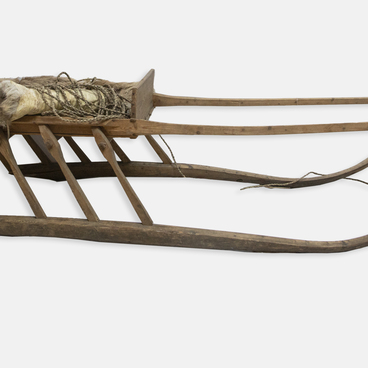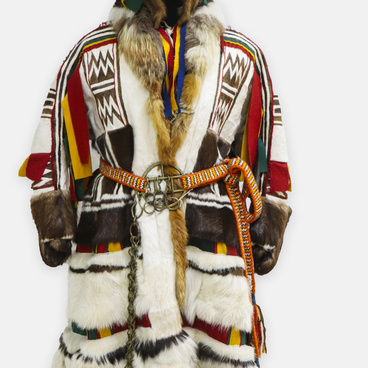The Nenets are an indigenous nomadic people of the Arctic. They still live a traditional way of life, traveling with reindeer herds along established routes known as “vorga”. They set up camps in the north in summer and in the south in winter. When choosing a new location for their camp, they focus on finding pastures for deer and suitable areas for hunting and fishing.
The Nenets start traveling in March, often reaching the seacoast where deer are less likely to be bitten by midges. In August, they travel back, closer to the border of the taiga where they are protected from harsh winter winds by trees and the snow is looser, making it easier for deer to get their food.
The nomadic lifestyle has influenced many elements of Nenets culture, from the portable house to the design of traditional clothes. In the conditions of northern wilderness, narrow reindeer sleds are the main means of transportation. Sleds first appeared in the Northern Urals over six thousand years ago and are still used by northern nomads.
Nenets sleds are very strong and stable, and the smooth curve of the runners helps overcome various obstacles. Sleds vary in size and purpose: there are men’s and women’s sleds, sacred, racing, and hand sleds, and ones for transporting stoves and houses. The Nenets Museum of Local Lore houses a women’s sled.
A women’s sled is similar in design to a men’s one but is heavier and more stable. It is equipped with more stanchions for supporting the passenger platform and borders on three sides so that it is convenient to place the cradle and protect small children from cold. When traveling with children, several blankets are placed on the women’s sled to cover the seat and walls. The lower blanket is made of fur and the upper one is made of colorful cloth.
A woman’s sled reflects the personality of its
owner, and each woman tries to decorate it in her own way. Usually, the front
parts of the sled are decorated in fall, and the décor is removed in spring.
Owners strive to protect the sled from humidity and sunlight. For this purpose,
nowadays the sled is painted with enamel, usually red. To make the runners last
longer and to prevent them from wearing out due to contact with the ground and
stones, they are equipped with replaceable underrunners.


